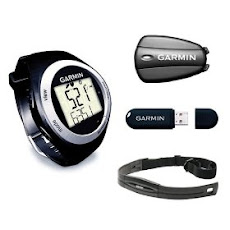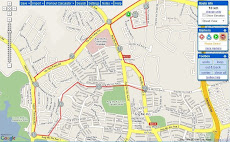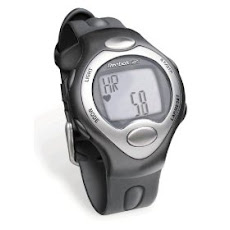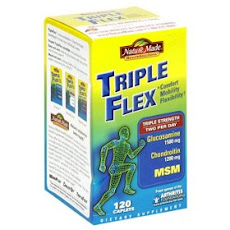Saturday, May 30, 2009
Drove back to Malaysia with wife to visit mom
Mom should be ready to be discharged from hospital either tomorrow or Monday.
Friday, May 29, 2009
TigerAirways from KL to SIN
TigerAirways from KL to SIN
TR453 08:45 to 09:35
Cost S$30?
Thursday, May 28, 2009
Mom feeding herself at breakfast and try sitting up on a chair today
After breakfast she took the medicine for her high blood pressure. It is pill pounded into powder form as she cannot swallow pills yet. The powdered medicine was mixed with water and she can drink it using a straw or with spoon.
She did well today and ate well.
2. The physiotherapist came around 10:30am today. Did the regular exercise for all the joints for her right hand and leg. For hand, bend the fingers to close and then open. The move the hand around the wrist area, Then bend the hand over the elbow area and open. Then bend the hand over the shoulder area. Each excerise do is repeated 10 times before moving to the next exercise.
For the right leg, move the toes up and down. Move the foot around the heel. Then bend the leg around the knee area (or to combine with movement around the hip area as well). Each exercise repeated 10 times before moving to the next exercise.
Today there is a new exercise. Use the working left hand to hold the affected right hand (clasped the 10 fingers acrossed each other). Then use the working left hand to pull the affected left hand up and above the head. Repeat for 10 times.
Her affected right side still not functioning. And her good left side is also well and not very strong.
3. The physiotherapist also shown me today how to move my mom from the bed lying down position to the sitting position on the bed side. Then move her over to a sitting chair. She advice to pull the pampers or trousers to move her instead of pulling the arms from under the shoulder as it may dislock the hands fromt he shoulder. After she sat on the chair, use a bedsheet or tower to tie her around the chair (not too tight) to hold her in place. Let her stay in sitting position for 30 minutes before moving her back to the bed. She did well today.
Met staff nurse today and she advice maybe better to get a help (either part time of full time) to help out when we bring mom home. Reason is that most family will be busy and have thier own things to do. It can help minimize tension to get a 3rd party helper and share the cost among the children based on her own personal experience. Family and relatives may not be able to attend to her full time whole day as each has their own work and other commitments.
Her body temperature and blood pressure is normal today. She is still taking high blood pressure medicine today.
The blood thining medicine Warfarine is given only after dinner. This Saturday will conduct blood test to see if the Warfarine dosage is correct and ok. If result is ok, she can be discharge from the hospital anytime after that.
More info on Warfarin :-
http://www.wisegeek.com/what-is-blood-thinner.htm
http://www.strokecenter.org/patients/anticoagulants.html
http://www.heartpoint.com/coumadin.html
http://generalmedicine.suite101.com/article.cfm/warfarin
http://www.medicinenet.com/warfarin-oral/article.htm
Wednesday, May 27, 2009
Stroke - signs and symptoms
Stroke - signs and symptoms
Stroke is often referred to by doctors as a cerebrovascular accident, but the term is not an accurate one since stroke is rarely an 'accident'. The underlying conditions of a stroke (called cerebrovascular disease) are usually present for years before a stroke occurs, although the symptoms of a stroke may occur suddenly.
There are sometimes quite specific warning signs of an impending stroke. By recognising the warning signs and taking action, you may be able to prevent a stroke or reduce its severity. It is important to be able to recognise the warning signs in order to get medical help as quickly as possible.
Transient ischaemic attacks
Transient ischaemic attacks (TIAs) are caused by a temporary cut in blood supply to the brain, due to the partial blockage of an artery by a blood clot or debris. TIAs have the same symptoms as a stroke, but they are temporary and do not usually cause long-term brain damage.
A TIA, or mini-stroke, is a warning of an impending stroke. A person who has had a TIA is at greater risk of having a stroke or heart attack. Early identification of symptoms and a diagnosis from your doctor greatly reduces the chances of a major stroke.
A TIA is:
- Transient – symptoms usually last for less than 24 hours.
- Ischaemic – failure of blood flow to part of the brain or eye.
- Attack – sudden onset of symptoms, which vary from person to person depending on which part of the brain or eye is starved of blood.
Symptoms of a TIA are very similar to those of a stroke. They can include:
- A numb or weak feeling in the face, arm or leg
- Trouble speaking or understanding
- Unexplained dizziness
- Blurred or poor vision in one or both eyes
- Loss of balance or an unexplained fall
- Difficulty swallowing
- Headache (usually severe or of abrupt onset) or unexplained change in the pattern of headaches
- Confusion
- Unconsciousness.
FAST stands for:
- Facial weakness – can the person smile; have their mouth or eyes drooped?
- Arm weakness – can the person raise both arms?
- Speech difficulty – can the person speak clearly and understand what you say?
- Time to act – act FAST and call 000 immediately.
Symptoms occur in a variety of ways
The warning signs or symptoms of stroke may occur alone or in combination. They may last a few seconds or up to 24 hours, and then disappear. These signs are mini-strokes and should not be ignored. They indicate a hidden problem with blood flow, which could trigger a stroke. The severity of the symptoms depends on the area of the brain affected and the cause.
Where to get help
- If you experience symptoms of a stroke, dial triple zero (000) for an ambulance or get to the emergency department of your nearest hospital immediately
- Your doctor
- National Stroke Foundation Tel. (03) 9670 1000 or 1800 787 653
- The symptoms of stroke can occur suddenly.
- Transient ischaemic attacks (TIAs) are an important warning sign that a stroke may occur in the future.
- Early identification of symptoms and a diagnosis from your doctor greatly reduces the chances of a major stroke.
Stroke - the after effects.
Stroke - the risk factors.
Stroke and high blood pressure.
Stroke and migraine.
Stroke can occur in children.
Stroke is a brain attack.
Stroke prevention.
Stroke prevention for high risk groups.
Stroke risk - quiz.
Transient ischaemic attack.
Want to know more?
Go to More information for support groups, related links and references.
http://www.betterhealth.vic.gov.au/bhcv2/bhcarticles.nsf/pages/Stroke_signs_and_symptoms?open
Sunday, May 24, 2009
Mom had a stroke
PA Passion Run Outcome

 My run data. Watch not calibrated and has a distance error of about +8.3%. My 15km run time is about 1:35 hour.
My run data. Watch not calibrated and has a distance error of about +8.3%. My 15km run time is about 1:35 hour.All our Hot-Runners participants successfully completed their runs as planned.
15km
 Tay BH ?
Tay BH ?HC Gan 1:35hr
Kuan 2:00hr
Kenneath Kuan 1:24hr
Wil 1:20hr
 Jeremy 1:24hr
Jeremy 1:24hrMargaret 1:40hr
YK Loke 1:25hr
CS Chan ?
Cecilia Yeoh 1:54hr
10km
SC Hong 1:10hr
Alena 1:05hr
 George 1:20hr
George 1:20hr5km
 Cheang 33 min (1st time participant)
Cheang 33 min (1st time participant)














